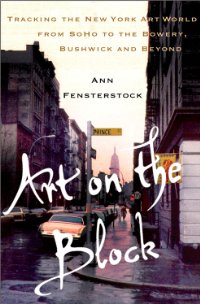
Gallatin alumna, author and art aficionado Ann Fensterstock spoke at a panel discussion hosted by Gallatin professor Emeritus Laurin Raiken on March 7. The panel focused on “Art on the Block,” Fensterstock’s book that explores the 50-year history of the gentrification of art in New York City. The book discusses the various neighborhoods that, at one point or another, were a site of the migration, gentrification, degeneration and decay of the art world.
Fensterstock started the discussion with a 25-minute presentation that summarized the content of her book, including a breakdown of each neighborhood, its history before it joined the art world and 10 key ideas that Fensterstock believes move the art community. Fensterstock considers the 10 ideas, including real estate, the migration of the art world, the economy, art fairs and the Internet changing the way we view art, to be the key themes that weave through her book.
Gallatin committee member Josephine De Caro asked Fensterstock about the relationship between real estate and art.
“There has to be some correlation between the evolution of real estate and where artists go,” De Caro said. “Artists always want to be in inexpensive places.”
De Caro said the opportunities in New York City are shrinking and asked where artists would go instead.
“The struggling artist, whether it’s the poet or the dancer, will always come to New York City, and they will always find a way to survive,” Fensterstock said in response. “My worry is for the mid-level galleries … that is the cohort that is getting threatened.”
The panel ended with a debate on the usefulness of galleries in the age of the Internet.
“Now that we’ve got peripatetic art fairs that can go set themselves up on the piers, and we’ve got the Internet where you can do a virtual tour of the gallery and the installation, why have a gallery?” Fensterstock asked the crowd.
Gallatin junior Devon Bussell said he learned a lot from Fensterstock.
“For me, the economic and geographic parts of art are less obvious, less apparent than the philosophical and formal aspects of art production,” Bussell said. “So hearing someone, [such as] a well-researched professional, talk about these material dimensions of the art world is something I like to utilize as a guideline for me entering that world.”
A version of this article appeared in the Monday, March 10 print edition. Khaleelah Logan is a staff writer. Email her at [email protected].














































































































































